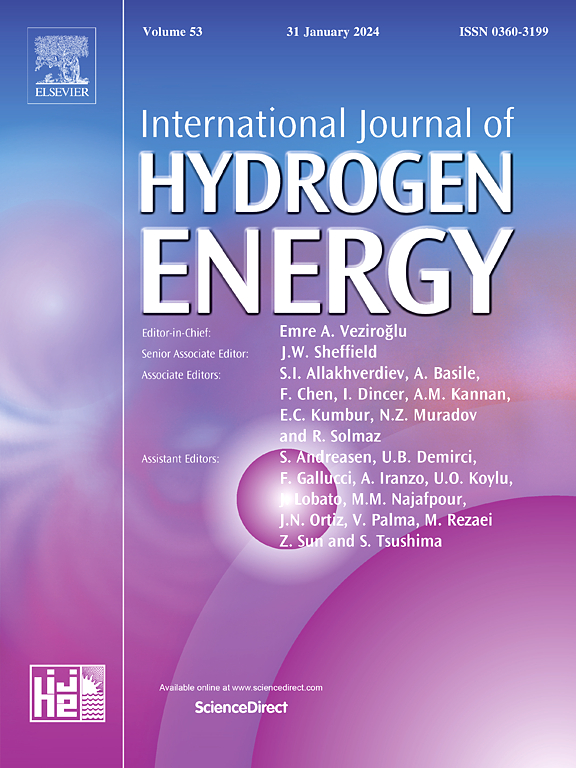基于物理信息神经网络的加氢站空间氢泄漏浓度场预测
IF 8.1
2区 工程技术
Q1 CHEMISTRY, PHYSICAL
引用次数: 0
摘要
准确、及时地预测氢气泄漏扩散对加氢站的安全管理至关重要。本研究提出了一种基于物理信息神经网络(PINNs)的模型,该模型利用稀疏监测数据实时重建空间氢浓度场。该模型集成了连续性方程、动量守恒方程和对流扩散方程作为物理约束,并在下风和逆风两种典型环境风情景下进行了验证。数值实验表明,该模型在训练数据有限的情况下具有较好的性能。例如,在复杂的逆风条件下,它仅使用5%的数据就获得了0.932的R2,优于使用20%训练的传统神经网络(R2 = 0.905)。这项工作为氢风险监测建立了一个快速、稳健、物理一致的框架,为氢基础设施的安全运行提供了技术支持,并展示了现实世界部署的强大潜力。本文章由计算机程序翻译,如有差异,请以英文原文为准。

Physics-informed neural networks based prediction of spatial hydrogen leakage concentration fields in hydrogen refueling stations
Accurate and timely prediction of hydrogen leakage dispersion is essential for safety management in hydrogen refueling stations (HRS). This study proposes a physics-informed neural networks (PINNs)-based model that reconstructs the spatial hydrogen concentration field in real-time from sparse monitoring data. The model integrates the continuity equation, momentum conservation, and convection-diffusion equations as physical constraints, and is validated under two representative environmental wind scenarios: downwind and upwind. Numerical experiments show that the PINNs model achieves superior performance, particularly under limited training data. For instance, under complex upwind conditions, it attains an R2 of 0.932 using only 5 % of the data, outperforming a conventional neural network trained on 20 % (R2 = 0.905). This work establishes a fast, robust, and physically consistent framework for hydrogen risk monitoring, providing technical support for safe operation in hydrogen infrastructure and demonstrating strong potential for real-world deployment.
求助全文
通过发布文献求助,成功后即可免费获取论文全文。
去求助
来源期刊

International Journal of Hydrogen Energy
工程技术-环境科学
CiteScore
13.50
自引率
25.00%
发文量
3502
审稿时长
60 days
期刊介绍:
The objective of the International Journal of Hydrogen Energy is to facilitate the exchange of new ideas, technological advancements, and research findings in the field of Hydrogen Energy among scientists and engineers worldwide. This journal showcases original research, both analytical and experimental, covering various aspects of Hydrogen Energy. These include production, storage, transmission, utilization, enabling technologies, environmental impact, economic considerations, and global perspectives on hydrogen and its carriers such as NH3, CH4, alcohols, etc.
The utilization aspect encompasses various methods such as thermochemical (combustion), photochemical, electrochemical (fuel cells), and nuclear conversion of hydrogen, hydrogen isotopes, and hydrogen carriers into thermal, mechanical, and electrical energies. The applications of these energies can be found in transportation (including aerospace), industrial, commercial, and residential sectors.
 求助内容:
求助内容: 应助结果提醒方式:
应助结果提醒方式:


